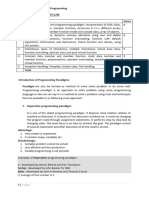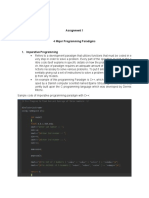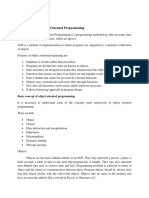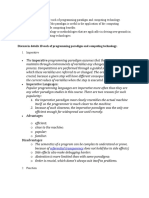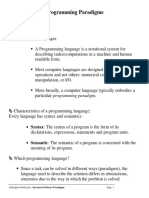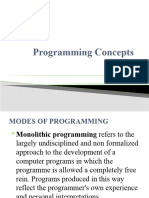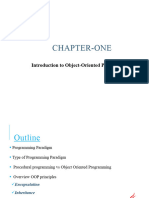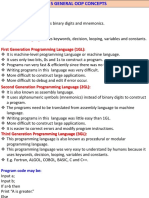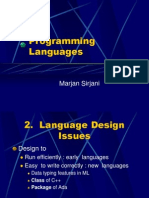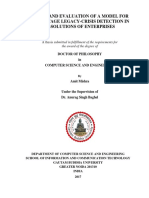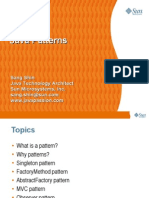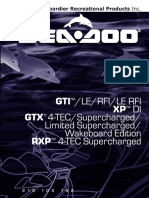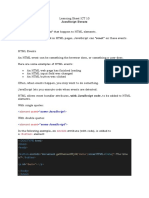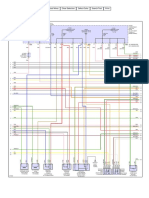0% found this document useful (0 votes)
4 views6 pages1.programming Paradogm
The document outlines various programming paradigms including imperative, declarative, object-oriented, functional, structured, and logical programming. Each paradigm is described with its focus, examples, and key concepts such as classes, objects, inheritance, and encapsulation. It emphasizes the importance of organizing code to effectively solve problems and communicate between objects.
Uploaded by
BLACK EAGLE CREATIONSCopyright
© © All Rights Reserved
We take content rights seriously. If you suspect this is your content, claim it here.
Available Formats
Download as PDF, TXT or read online on Scribd
0% found this document useful (0 votes)
4 views6 pages1.programming Paradogm
The document outlines various programming paradigms including imperative, declarative, object-oriented, functional, structured, and logical programming. Each paradigm is described with its focus, examples, and key concepts such as classes, objects, inheritance, and encapsulation. It emphasizes the importance of organizing code to effectively solve problems and communicate between objects.
Uploaded by
BLACK EAGLE CREATIONSCopyright
© © All Rights Reserved
We take content rights seriously. If you suspect this is your content, claim it here.
Available Formats
Download as PDF, TXT or read online on Scribd
/ 6





